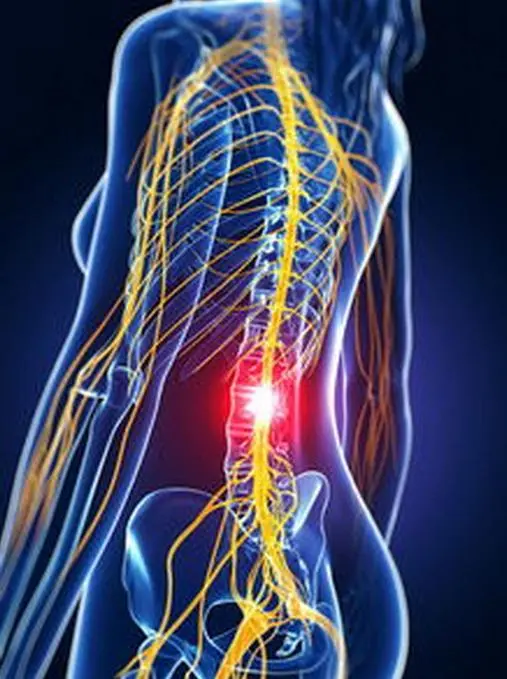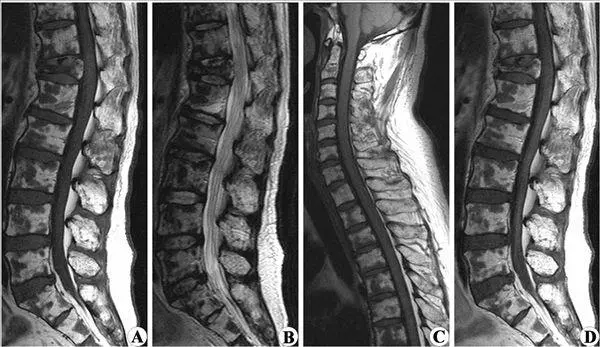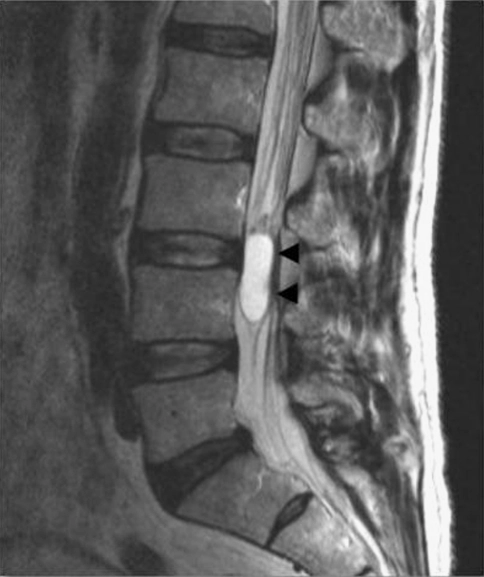Introduction: The incidence of spinal tumors is low, but due to its complex types, insidious onset, difficult early diagnosis, unsatisfactory treatment effects, and poor prognosis, more than 70% of spinal tumors are metastatic cancers. At the same time, spinal tumors can cause damage to nerve function and bring severe pain to patients, resulting in a sharp decline in the quality of life of patients, especially patients with malignant spinal tumors, the quality of life is extremely low. What are the signs and symptoms of spinal tumors

1. Understanding the Classification of Spinal Tumors
A. Primary benign tumor
Primary tumors are relatively rare, and the etiology of primary tumors lies in the bony components of the vertebrae. Primary benign bone tumors are more common in children and adolescents, and are more invasive and destructive to bone tissue, but do not involve other tissues. Benign primary bone tumors in the spine and sacrum accounted for 5.9% of benign bone tumors throughout the body. Aneurysmal bone cysts, giant cell tumors, and hemangiomas are all primary benign bone tumors.
B. Primary malignant tumor
Malignant bone tumors not only have invasive and extensive destruction of vertebrae, but also involve other tissues. Primary malignant bone tumors of the spine account for 19.5% of the systemic malignant bone tumors. Primary malignant tumors are more common in children and adolescents. The primary malignant tumors of the spine are mostly chordoma, myeloma, bone malignant lymphoma, chondrosarcoma and osteosarcoma tumors. The most frequently affected sites are the thoracic spine, followed by the lumbar spine and cervical spine.

C. Spinal metastases
Spinal metastases (cancers) refer to malignant tumors originating in a certain organ, most of which are cancers, and a few are sarcomas, which are secondary tumors that metastasize to the spine through the blood or lymphatic system. Spinal metastases are one of the most common forms of malignant tumors.
Most of the spinal metastases have serious complications, such as advanced limb pain, limb dysfunction, etc. More serious cases can lead to pathological fractures or even paraplegia, and eventually lead to the death of the patient. Its early diagnosis is very difficult, and at present, biopsy of the lesion is the fastest and best method for definite diagnosis.
About 1/4 of cancer patients develop bone metastases, and spinal metastases are the most common among bone metastases, most of which originate from thoracolumbar lesions and then metastasize to body attachments without any symptoms during the period. When the tumor breaks out of the cortex and enters the soft tissue, compressing the nerve root, or the pathological fracture has angular deformity, the tumor breaks into the spinal canal and compresses the spinal cord, the spinal cord is invaded, and the symptoms of meningitis occur.

Gradually aggravate for several weeks or months, with percussion pain. The pain is often located below the level of the lesion. The length of time from limb weakness to complete paralysis is related to prognosis.
2. Understanding the Growth Characteristics of Spinal Tumors
Centrifugal growth is the growth characteristic of spinal tumors, mainly showing marginal growth. In the most active part of spinal tumor growth, the density and distribution of microvessels around the lesion are higher than those in the center, and it has strong invasiveness to the surrounding tissue. Tumors have the biological characteristics of spreading and growing along the direction of small resistance. They mainly grow along the gaps or lacunae of the loose tissue next to the nourishing blood vessels, the trabecular bone gap and the Harvard canal, and the appearance is mostly irregular such as block.
Benign tumors of the spine are late onset, with few inflammatory cells and no neovascularization. There are very thin mature fibrous cysts or very slight surrounding tissue reaction area, the growth range of late-onset benign tumors is completely confined to the interstitial tissue, the cysts grow mixed with the surrounding tissue, and the surrounding tissue and the tumor mass form an extra-capsular area. The plane of separation is between the surrounding tissue and normal tissue.
Active benign tumors are not self-limiting and grow progressively. The tumor mass invades the surrounding tissue and protrudes into the cyst. The tissue of the cyst wall is thicker and contains abundant tumor cells and is immature. Active tumors invade primarily within mature trabecular bone, surrounded by new and abnormal blood vessel growth. And there is a moderate or more inflammatory reaction, and the tumor proliferates into the interstitial tissue.
A demarcation line exists between the tumor invasion site and the surrounding normal tissue. Low-grade malignant tumors can penetrate cysts in many parts and enter the reaction zone, resulting in regional or distant metastasis. The probability of distant metastasis depends on the time of treatment. If the treatment is timely, there will be no distant metastasis.
Compared with the low-grade malignant tumor, the surrounding tissue reaction area of benign tumor is not thick. The residual tissue in the surrounding tissue reaction zone will eventually form a pseudocyst, which is part of the tumor.
Aggressive tumors have irregular margins and local invasion to surrounding tissues. An inflammatory reaction occurs due to the accumulation of tumor cells. The cysts of the tumor are extremely thin, and the tumor protrudes into the reaction area in the form of finger-like protrusions. The trabecular space in the bone of malignant spinal tumor presents with satellite foci packing. Surrounding tissue is invaded, but the tumor is immature. Osteoclasts resorb reactive bone tissue adjacent to the tumor edge.
Even with timely and appropriate local treatment, high-grade malignant tumors still have a high probability of metastasis. High-grade malignant tumors are extremely aggressive to normal tissues and bones. The tumor directly invades the lesion, destroys the cyst and invades the reaction area to form a pseudocyst. High-grade malignant tumors invaded tissue widely, with severe edema of surrounding tissue cells and deep invasion of normal tissue.
3. The signs and symptoms of spinal tumors

- Pain may vary according to different parts, such as neck and shoulder pain, back pain, waist and leg pain, and radiate to the upper limbs, intercostal space and lower limbs accordingly. The pain continued to worsen at night, and there may be local percussion pain.
- Muscle spasm, limited activity and deformity, weakness of limbs, sensory disturbance, difficulty in walking on their own, or unsteady gait, with strong pathological reflexes.
- Malignant patients have a short onset time and rapid disease progression. The pain is severe and requires sedatives for pain relief.
- Locally formed lumps, which can be palpated in the deep layers of the patient’s muscles, with different sizes and degrees of hardness, and vertebral mass, which can be found by physicians with rich clinical experience during the outpatient digital examination.
- In the late stage, there may be loss of appetite, weight loss, weight loss, low-grade fever and anemia.
- Benign tumors have mild symptoms, long medical history and slow development
- Paraplegia, incontinence.

Conclusion
Conclusion: The corresponding symptoms and signs usually exhibited by spinal tumors cannot be fully used as the basis for diagnosis. If a diagnosis is to be made, it is necessary to go to the hospital in time to cooperate with medical staff for relevant examinations. If the diagnosis requires early treatment, the deterioration rate of spinal tumors is high, and It involves a wide range and needs to be taken seriously and not taken lightly. Read more updates about health on http://www.facefof.com
